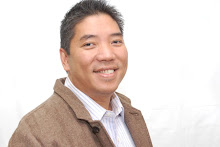By Ambeth Ocampo
Philippine Daily Inquirer
First Posted 01:59:00 10/03/2008
MANILA, Philippines—Felix Resurreccion Hidalgo (1855-1913) is acknowledged as one of the great Filipino painters of the late 19th century. If one of his paintings is available on the art market, it usually comes with a seven-figure price tag. But to say that his friend and contemporary, Juan Luna, overshadowed him is an understatement. Both won medals in the 1884 Madrid Exposition of Fine Arts, but Hidalgo and his silver medal do not quite top Luna’s gold.
Both were gifted artists, and some people are of the opinion that Hidalgo was technically a better painter than Luna, so why is he almost forgotten? The difference lies in their lives. Luna’s tragic life, highlighted by his murder of his wife and mother-in-law, is packed with enough action to feed a novel or fuel a period film. Hidalgo lived a quiet life, painting in his Paris studio and spending three decades abroad, longer than the period he lived in the Philippines.
Hidalgo was not involved in the reform movement, although he counted the major players, like Jose Rizal, Marcelo del Pilar, Mariano Ponce and Graciano Lopez Jaena, among his friends or at least nodding acquaintances. He returned briefly to the Philippines in 1912, long after the turbulence of the Philippine Revolution and the Philippine-American War. Unlike Luna, he did not associate himself with the First Philippine Republic under Emilio Aguinaldo. One could say that if he had stepped into the river of Philippine history, he would have been more than a footnote in our textbooks.
For the last 25 years that I have been a frequent visitor to the Lopez Memorial Museum, I would relax from library research by stretching my legs and walking in the Hidalgo gallery to admire and study the paintings, oil studies, or “bocetos,” and drawings collected by Eugenio Lopez Sr. Looking at all these makes me see how meticulous he was in preparing for a painting and this give me an insight into his personality. Lopez collected more Hidalgo works than Lunas, yet visitors pay more attention to Luna.
Hidalgo was born in Manila on Feb. 21, 1855. He was the third in a brood of seven, fruits of the union of Eduardo Resurreccion Hidalgo and Maria Barbara Padilla who has been immortalized in midlife and old age by her son. In an age before photography, upper-class Filipinos recorded their likenesses in commissioned portraits. Some had grand ones made for their well-appointed living rooms; others had portable miniatures painted on sheets of tin or ivory.
One of the most famous portrait painters in the Philippines was Antonio Malantic, who made a portrait of Narciso Hidalgo and his grandson in 1859. It is a wonderful work showing two generations of one family. It is also a significant painting that explains how history changes even the titles of works of art. In 1859, this Malantic work was known as “Narciso Hidalgo and his grandson,” but today it is better known as “Felix Resurreccion Hidalgo and his grandfather.” The grandson has eclipsed the patriarch.
We have no record of Felix Resurreccion Hidalgo’s early schooling, although we can presume he had a private tutor or was taught by his mother, a businesswoman who had attended the Escuela Municipal [Municipal School]. He completed his Bachiller en Filosofia [Bachelor in Philosophy] in 1871 at the University of Santo Tomas. What is not well known is that he was implicated in a student demonstration that gained significance in the persecution that followed the execution of Fathers Gomez, Burgos and Zamora in 1872. Historian O.D. Corpuz describes the period best as the “Terror of 1872.” It wiped out a whole generation of prominent Filipinos.
Perhaps as a result of this terror, Hidalgo retired to his studio and devoted his life to painting. He enrolled in the Manila Escuela de Dibujo y Pintura, the school of drawing and painting run by a man named Agustin Saez. Luna also studied here briefly and, depending on the book you are reading, either left or was expelled from school. Saez was a good teacher but didn’t seem to be a nice man.
In 1877, Domingo Vidal y Soler held a contest for the frontispiece of a grand edition of Manuel Blanco’s “Flora de Filipinas.” Hidalgo won second place and would probably have won the top prize if the more experienced school director, Saez, did not compete with his students. The frontispiece by Hidalgo is not extant, but if you go through the colored plates of this wonderful botanical work, you will find some plates done by him.
Hidalgo must have shown his talents early in Manila because some of his paintings were sent to the Philadelphia Exposition of 1879. With not much more to learn in Manila or perhaps to escape the “Terror of 1872,” he went to Spain and enrolled in the Real Academia de Bellas Artes de San Fernando in Madrid, the same school where other Filipino artists also enrolled, among them, Esteban Villanueva, Miguel Zaragoza, Juan Luna, and Jose Rizal. (To be continued)
* * *
My slide-lecture “Hidalgo, Bustamante, and the Big Bad Wolf,” sponsored by the Museum Foundation of the Philippines, will be held at the Ablaza Hall of the National Gallery of the National Museum this Saturday at 10 a.m. The public is invited.
* * *
Comments are welcome at aocampo@ateneo.edu.
Monday, October 6, 2008
Subscribe to:
Post Comments (Atom)

1 comment:
The Antonio Malantic miniature portrait is of D. Narciso Padilla and D. Felix Resurreccion Hidalgo y Padilla, Narciso's grandson.
There was a Narciso Hidalgo but you are probably referring to D. Narciso Resurreccion Hidalgo y Padilla, an older brother to the painter Felix, and a member of the Malolos Congress.
Post a Comment